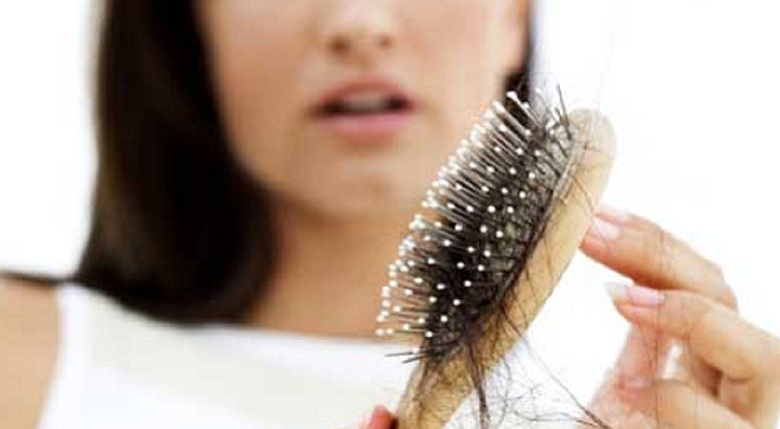The 5 Best Ways to Fight Hair Loss
I’d bet good money that you don’t want to lose your hair.
You might talk a good game, saying that you’re going to rock the bald look.
You’ll be sexy like The Rock or Jason Statham, right?
Sure, and that’s why you’re peeking at an article about hair loss.

I won’t tell anyone.
I don’t want to lose my hair either.
Let me share my secrets for growing back hair. It’ll just take a couple of minutes to read them.
Then you decide what you’re going to do. Spend as much or as little as you want.
It all depends on why you’re losing your hair.
The number one reason why hair stops growing and falls out
The most common reason people go bald is their genes.
If it runs in the family, you’re probably doomed.
Unless, of course, you start fighting now.
It’s normal to lose up to a hundred hairs per day. But if you see a receding hairline or thinning patches, there’s no time to waste (1).
Step one: Topical treatment
The number one recommendation for patients dealing with genetic hair loss is to treat it with minoxidil.
You might recognize it by its brand name, Rogaine.
There are different versions for men and women.
Plus, you can choose between a foam or a liquid that you apply to your scalp once a day.
There are few side effects, and it’s clinically proven to work. It prevents hair follicles from shrinking and failing.
Moreover, it’s cheap, and even generic versions work well.
Minoxidil is one of the best hair growth products for men.
The con is that once you stop using it, the problem returns.
Step two: Defend your remaining hair
Next, you need to protect the hair you have left.
It’s time to switch to a hair growth shampoo, or at least a mild product that conditions the hair and scalp.
You don’t need lots of lather or perfume to get your hair clean. The more gentle the shampoo, the better for you.
And there’s one more thing to add to your routine.
Conditioner.
Maybe up till now you’ve never used it. But now you need it.
Hydrated hair and happy follicles will stay healthy.
Step three: Nourish your hair from the inside out
This is kind of a CYA thing.
It can’t hurt to supplement your diet with hair growth vitamins.
As long as they don’t conflict with your medication, give them a try.
Extra vitamins can help your follicles ramp up production.
What’s more, studies show that herbs like saw palmetto and Fo-Ti can slow down and prevent hair loss.
Step four: Science the heck out of the problem
A scientist (working on an entirely different project) discovered that the red light caused hair to grow back on mice that he had shaved.
Ta-da! That fact instantly captivated more scientists who performed additional studies on humans.
Now it’s possible to purchase your own home-use low-level light therapy device to regrow your hair.
Laser hair growth devices are painless to use.
The price you pay is a lot less than repeated visits to the dermatologist.
Furthermore, these devices don’t interfere with other treatments like vitamins or minoxidil.
The only downside is that you need to commit to doing the sessions for a few minutes each day. Also, it may take weeks to months to see dramatic results.
Step five: Pay attention to the details
If you’re about to embark on an epic battle against hair loss, document your journey.
Take a photo.
Then, in a couple of months, take another photo and compare.
If things aren’t improving, it’s time to change your plan of attack.
Likewise, there are a few other small changes that can help your hair stay strong.
Obviously, a healthy diet and plenty of water is a good idea.
You’ve probably heard that reducing your stress prevents hair loss, too.
But did you know that you need to keep your scalp safe from too much sun exposure?
UV radiation prematurely ages your skin, which speeds up the hair loss process.
Also, avoid blow-drying, heat-styling, and color treatments.
In conclusion, get the advice of the experts. Talk to your doctor and your stylist.
Find out if they have other tips to help you enjoy a healthy head of hair for as long as possible.
Sources:
1. https://dermnetnz.org/topics/hair-loss/ by Dr. Amanda Oakley, published December 2015, accessed February 6, 2020